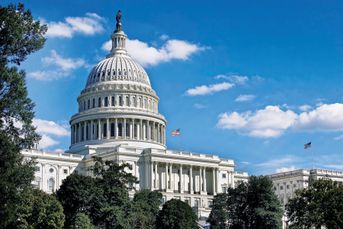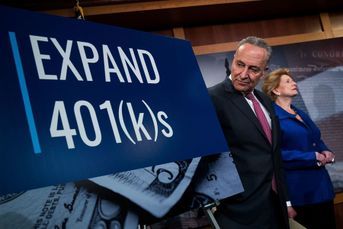The ins and outs of pairing a 401(k) plan match with student loan repayment

An IRS nod shows potential pathways for employers, but several considerations must be made in advance of developing such a program.
It’s no secret that many employees are struggling with financial issues created by large debts to finance their college education. One side effect is that many of those newly minted graduates and early stage employees are not deferring into their employer’s 401(k) plan.
To remedy that, one large employer — reported to be Abbott Laboratories — thought of a design for its 401(k) plan to match for student loan payments. The company filed a request with the Internal Revenue Service to approve that design. The IRS recently granted its approval in a private letter ruling (PLR).
The concept is that an employer will make matching contributions to its 401(k) plan if employees make payments on their student loans. For example, in the private letter ruling, the employer makes a match of 5% of pay, if employees pay at least 2% of compensation for student loans.
The legal worry is that an arrangement that conditions employer contributions on loan repayments would violate the so-called “contingent benefit rule.” That rule says a 401(k) sponsor cannot condition other benefits on an employee’s decision to make, or not make, deferrals into a plan. However, this arrangement is the exact opposite of that. In this case, the additional benefit — the employer match — is based on an employee’s repayment of student debt. In other words, it doesn’t violate the contingent benefit rule … and the IRS ruling says that it doesn’t.
While the PLR is good news for all employers because it reflects the IRS’ thinking, a “private” letter ruling only provides legal protection for the company that receives it. As a result, companies should talk to their lawyers before adopting a program to make 401(k) matching contributions for student loan repayments. Having said that, though, there is now a pathway for those programs.
Broadly stated, there are two benefits to those arrangements. The first is that the employees participate in the plan early in their careers and, as a result, probably will be more engaged along the way. The second is that it shows that the plan sponsor understands the financial pressures created by student loans and wants to be helpful. That is particularly important for companies that want to attract college-educated employees.
There are “devils in the details,” though. For example, in the PLR, employees can be credited with a match if they make either deferrals or student loan repayments. In other words, it’s up to the employee to decide whether to use the student loan program or whether to participate in the ordinary manner. Employers who want to match student loan payments should include that flexibility in their program.
On the other hand, companies wouldn’t need to copy the matching formula in the PLR; companies should be able to continue their current matching arrangements when crediting student loan repayments. For example, if a plan sponsor currently matches dollar-for-dollar up to 3% of pay, and the company is willing to give similar credits for student loan repayments, that design also would satisfy the contingent benefit rule.
In considering an arrangement to match student loan repayments, a plan sponsor should look at its potential impact on the plan’s discrimination testing. For example, the student loan repayment would not be considered to be a deferral and, therefore, could not be taken into account in the discrimination testing. On the other hand, the contributions made by the company will be taken into account (but not as a matching contribution; instead, they would be treated as regular company contributions). As a practical matter, though, a student loan program is unlikely to adversely affect the discrimination testing for most plans.
Another consideration is whether the plan’s record keeper can administer matching contributions for loan repayments. Since the loan repayments occur outside of the plan, the record keeper would need to rely on the plan sponsor to determine the amount of the loan repayments and the matching contribution. However, if the company can provide that information to the record keeper, it should handle the administrative issues.
The key point, though, is that companies can take steps to include college-educated employees in their 401(k) plan and, at the same, support the repayment of student loans. Companies that want to attract college-educated employees need to develop programs to help those employees; 401(k) matches for student loans can fill that bill. This is a significant development.
Fred Reish is a partner at the law firm Drinker Biddle & Reath.
Learn more about reprints and licensing for this article.







